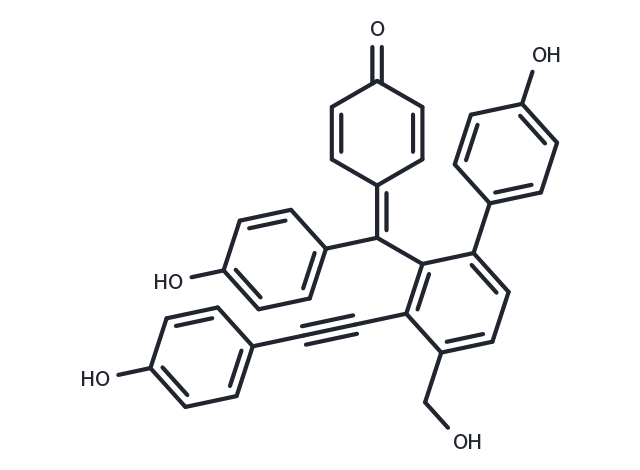Powder: -20°C for 3 years | In solvent: -80°C for 1 year


Selaginellin has a neuroprotective effect against L-glutamate-induced neurotoxicity through mechanisms related to anti-oxidation and anti-apoptosis via scavenging reactive oxygen species and up-regulating the expression of klotho gene. Selaginellin shows inhibitory effect on high glucose-induced cell injury and apoptosis in differentiated PC12 cells, which is related to inhibition of LOX-1/NADPH oxidase-reactive oxygen species/caspase-3 signaling pathway.

| Pack Size | Availability | Price/USD | Quantity |
|---|---|---|---|
| 5 mg | Inquiry | $ 1,559.00 |
| Description | Selaginellin has a neuroprotective effect against L-glutamate-induced neurotoxicity through mechanisms related to anti-oxidation and anti-apoptosis via scavenging reactive oxygen species and up-regulating the expression of klotho gene. Selaginellin shows inhibitory effect on high glucose-induced cell injury and apoptosis in differentiated PC12 cells, which is related to inhibition of LOX-1/NADPH oxidase-reactive oxygen species/caspase-3 signaling pathway. |
| In vitro | L-glutamate plays a key role in neuronal cell death associated with many neurodegenerative conditions such as cerebral ischemia, hypoxia, Alzheimer's, Huntington's, and Parkinson's diseases. METHODS AND RESULTS: Selaginellin, a component extracted from Saussurea pulvinata (Hook.et Grev.) Maximo, was assessed for its ability to protect rat pheochromocytoma (PC12) cells against oxidative toxicity induced by glutamate. The differentiated PC12 cells were pretreated with various concentrations (10(-7), 3 x 10(-7), or 10(-6) M) of Selaginellin for 1 h prior to exposure to L-glutamate. Selaginellin was shown to protect PC12 cells against glutamate toxicity, as determined by characteristic morphological features, lactate dehydrogenase release and cell viability, and apoptosis as evaluated by Hoechst 33342 staining assay and caspase-3 activity. In addition, the increase in levels of reactive oxygen species and decrease in klotho gene expression induced by glutamate were significantly reversed by Selaginellin. CONCLUSIONS: Our study suggests that Selaginellin has a neuroprotective effect against L-glutamate-induced neurotoxicity through mechanisms related to anti-oxidation and anti-apoptosis via scavenging reactive oxygen species and up-regulating the expression of klotho gene. |
| Source |
| Molecular Weight | 512.55 |
| Formula | C34H24O5 |
| CAS No. | 941269-84-7 |
Powder: -20°C for 3 years | In solvent: -80°C for 1 year
You can also refer to dose conversion for different animals. More
bottom
Please see Inhibitor Handling Instructions for more frequently ask questions. Topics include: how to prepare stock solutions, how to store products, and cautions on cell-based assays & animal experiments, etc.
Selaginellin 941269-84-7 inhibitor inhibit
